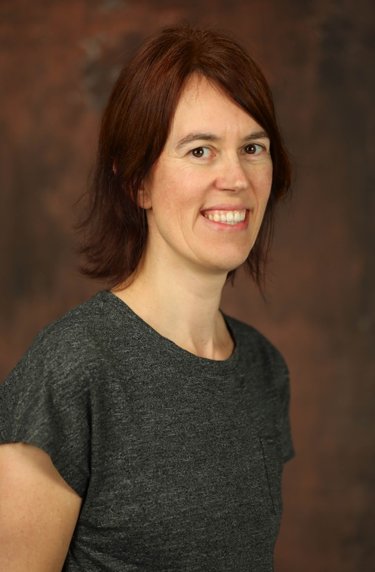Advancing patient-specific models of subthalamic deep brain stimulation
Anneke Frankemolle-Gilbert is a PhD student in the Department of Biomedical Signals and Systems. Promotors are dr.ir. T. Heida from the Faculty of Electrical Engineering, Mathematics and Computer Science and prof.dr. C. McIntyre from the Case Western Reserve University.
 Deep brain stimulation (DBS) in the subthalamic region is an established therapy for movement disorders like Parkinson’s disease. Computational models of DBS provide insight into the electric field generated by DBS and the response it has on the neural tissue in the brain. Patient-specific models of DBS include the anatomical information of the patient to predict the effects of DBS. These models have been used to aid neurosurgeons with selecting an optimal DBS location and neurologists with the clinical programming of DBS to select therapeutic parameter settings.
Deep brain stimulation (DBS) in the subthalamic region is an established therapy for movement disorders like Parkinson’s disease. Computational models of DBS provide insight into the electric field generated by DBS and the response it has on the neural tissue in the brain. Patient-specific models of DBS include the anatomical information of the patient to predict the effects of DBS. These models have been used to aid neurosurgeons with selecting an optimal DBS location and neurologists with the clinical programming of DBS to select therapeutic parameter settings.
The subthalamic nucleus (STN) is one of the most common surgical targets for the treatment of PD. However, there is clinical debate if optimal therapeutic effects are achieved with stimulation within, or dorsal to, the STN. As such, observations of therapeutic benefit while stimulating white matter pathways instead of the grey matter nucleus helped usher in a concept known as connectomic DBS modeling, which characterizes brain network connections that are modulated by stimulation. While patient-specific DBS models have been unsuccessful in defining a singular therapeutic target for PD, the introduction of connectomic modeling has shifted hypotheses on the control of symptoms from target areas within a specific nucleus to specific axonal pathways that course in/out or around the nucleus.
This dissertation describes advances in patient-specific DBS computational modeling methodology seeking to identify a balance between biophysical realism and computational simplicity. Chapter 2 provides insights into modeling the DBS electric field in the brain using a 3D head model including heterogeneous and anisotropic electrical properties of the brain tissue. These results are included in chapter 3 which introduces StimVision, a software tool designed for clinical research on subthalamic DBS. StimVision displays the axonal pathways within the patient imaging data, which allows for electrode positioning and pathway activation calculations as a function of the stimulation parameter settings.
StimVision is consequently used in chapter 4 to evaluate the role of electrode location and stimulation parameter selection on the axonal pathways within the subthalamic region. Many pathways course through the subthalamic region, while some provide relief of symptoms, others introduce side effects. The results show that selective stimulation is not likely and co-activation of multiple pathways always occurs with typical DBS settings. However, the stimulation location does affect the relative recruitment of the pathways and stimulation parameters can help bias the activation of some pathways over others. Chapter 5 extends the analyses of chapter 4 to define theoretical stimulation locations to focus activation to specific pathways associated with symptom reduction. Subthalamic DBS Map is a software tool developed to interactively visualize the anatomically and biophysically accurate pathway-activation results generated in chapter 5. This tool shows pathway-focused target areas for stimulation parameters and pathway activation thresholds set by the user.
Chapter 6 combines connectomic-based programming for DBS with the patient-specific models from Chapter 2 and the StimVision software package from Chapter 3 in a prospective clinical outcomes study. The results show that automated connectomic DBS programming is safe and provides therapeutic relief similar to traditional DBS programming. Additionally, the time it takes for the clinician to establish therapeutic settings is significantly shorter than traditional programming which greatly reduces the burden on the patients.
The goal of the work presented in this dissertation is to demonstrate the advancements made in patient-specific models of subthalamic deep brain stimulation from the biophysical concept of connectomic DBS modeling to its therapeutic application in a prospective clinical trial.


